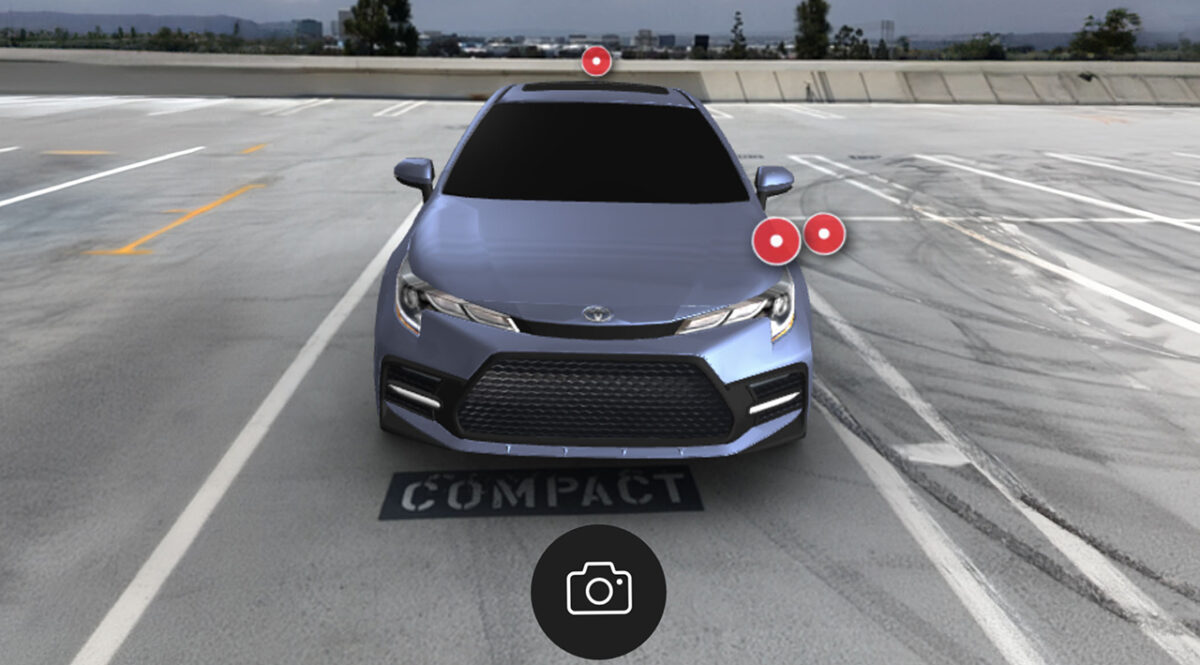Kosta Popov looks at how immersive technology helps automotive dealers attract online customers
According to an Automotive Shopper Study by Google, the vast majority (95%) of car buyers start their car search journeys online. Other research has revealed that the global online car-buying market was valued at US$326bn in 2023. Looking forward, IMARC Group expects the market value to reach US$754bn by 2032. Shopping for a car from the comfort of home allows consumers to thoroughly research options, compare prices, and make well-informed decisions. More than half of online car buyers mentioned that they visited three or more websites before deciding on a vehicle. With so many offers available online, auto brands and dealers often have just one chance to capture and retain consumers’ interest.
Car dealers are increasingly looking to integrate their websites with technologies such as 3D and augmented reality (AR) for the creation of memorable experiences where customers are encouraged to take test drives. These tools enhance the online car research process, making it more engaging and bridging the gap between the online and offline experience.
AR transforms the shopping journey
AR is a cutting-edge technology that allows users to overlay digital objects into real-world environments. This innovative tool presents numerous advantages for car dealers, especially in relation to online car sales. Dealerships can efficiently reach a wide audience of potential buyers thanks to the accessibility of AR on smartphones and other devices. The immersive experience can be enjoyed anywhere and anytime, bringing the cars to potential customers.
Toyota’s mobile ad unit launch of the 2020 Toyota Corolla sedan is one example of using AR in the automotive industry. The immersive web-based experience initially appears as a mobile banner ad. Once clicked, the user’s camera is accessed to enable the AR experience. A Toyota Corolla sedan appears in the user’s environment, allowing them to explore the car’s features from the convenience of a mobile device. The immersive nature of AR builds greater emotional attachment with the car, increasing the likelihood of buyers opting for higher-priced models with additional features. Ultimately, this leads to higher average order values for the dealership, driving profitability.
3D technologies elevate customer experience
Many automotive brands have incorporated interactive 3D content into their online catalogs for the enhancement of customer shopping experiences. For instance, Audi’s website features an advanced car 3D configurator that allows users to virtually interact with the vehicle, rotating it 360 degrees for a comprehensive view from all perspectives. Similarly, BMW gives clients the opportunity to engage with 3D car models. Such models can be rotated and inspected as if the vehicles were physically present in a showroom.
The 3D car configurator delivers a highly realistic representation of the vehicle, showcasing detailed interior and exterior features, textures, and the impact of different lighting conditions. Implementation of the car configurator allows automotive retailers and manufacturers to significantly enrich the customer journey, turning passive viewers into active participants in the customisation process. This fosters a stronger connection between consumers and the cars they are interested in.
However, very few dealerships offer the highly sought-after 360-degree viewer feature. Creating a 3D image of a vehicle is a time-consuming and costly process, involving manual 3D modelling that can take several days and thousands of dollars. As a result, this technology is mainly used by major auto brands and dealerships on their websites.
One of the most convenient ways for other brands and dealerships to create and share interactive 3D images of vehicles is to use ready-made solutions for immersive content creation. Another approach is to sell cars on automotive marketplaces that have already integrated this technology. For instance, CarSwitch, a used car marketplace in the UAE and Kingdom of Saudi Arabia, has integrated Cappasity’s 3DShot app to enable consumers to virtually examine vehicles from their homes just as they would in person.
To create a 3D demonstration of a car, CarSwitch specialists open the app on their smartphones, select the vehicle capturing mode, and move around the car. The app automatically generates a 3D image that can be seamlessly integrated into the platform. This detailed 3D image showcases the car from every angle, allowing buyers to inspect it thoroughly by rotating, zooming in, and observing intricate details. CarSwitch saw a significant increase in car buyer engagement following the integration of immersive content featuring 3D car images.
Apart from offering immersive shooting capabilities via third-party tools, car marketplaces can now seamlessly incorporate this functionality into their mobile apps using comprehensive solutions like Mertsy SDK. With this integration, car dealers simply have to select “Create 3D photo” within the marketplace’s mobile app, capture the car by circling around it, and include the resulting 3D image in their listing. After embedding immersive content, sellers observe at least a 12% increase in conversion action: ads with 3D images receive better feedback (calls, messages).
3D and AR technologies remain among the hottest tech trends in online automotive sales. Immersive technologies like thees provide a more detailed and accurate visualisation of a car, which could boost buyer interest and lead to additional sales.
About the author: Kosta Popov is Chief Executive and Founder of Cappasity

